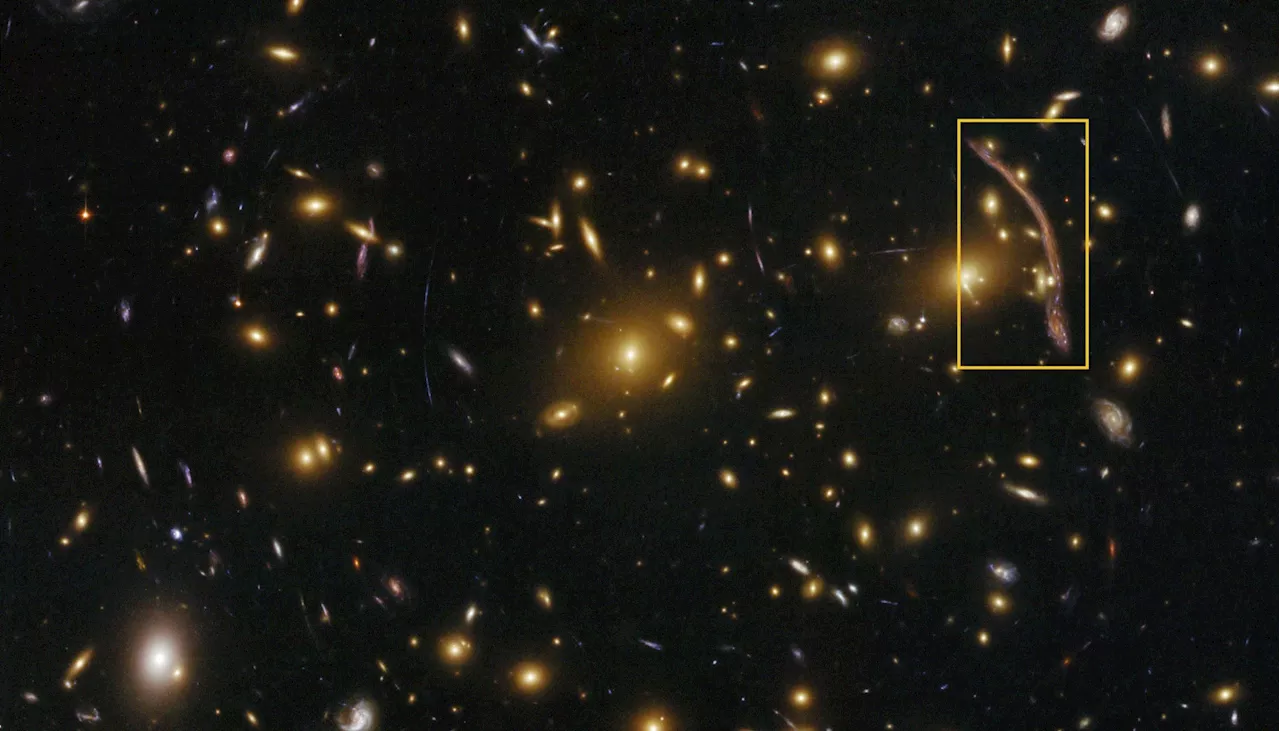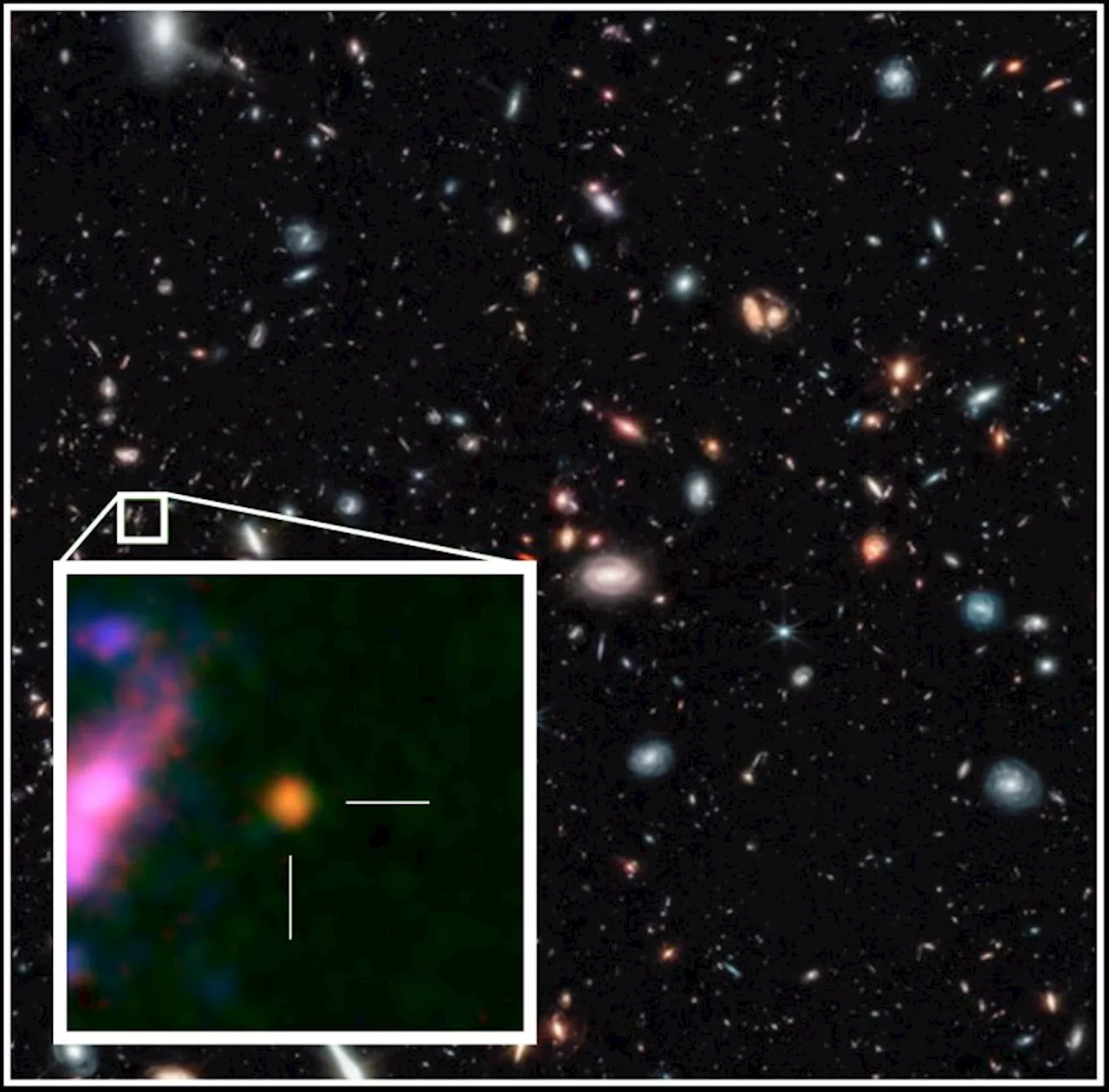The ALMA radio telescope array has determined the age of a distant galaxy, GHZ2/GLASS-z12, to be 367 million years after the Big Bang. This discovery, made possible by the combined power of JWST and ALMA, offers unprecedented insights into the nature of the earliest galaxies in the Universe.
The ALMA radio telescope array has precisely determined the cosmic age of a distant galaxy, GHZ2/GLASS-z12, identified by the James Webb Space Telescope ( JWST ), to be 367 million years after the Big Bang. This groundbreaking discovery stems from the combined power of cutting-edge observatories like JWST and advancements in interferometry, a technique that merges multiple light sources for enhanced clarity in observing celestial objects.
These advancements have revolutionized our understanding of the earliest galaxies in the Universe.GHZ2, located a staggering 13.4 billion light-years away, is one of the most distant and earliest galaxies ever observed. The remarkable observations by both JWST and ALMA have provided astronomers with unprecedented insights into the nature of these primordial galaxies. Jorge Zavala, an astronomer at the East Asian ALMA Regional Center at the NAOJ, led this study. He explained that the team meticulously pointed ALMA for several hours at a seemingly empty location in the sky, aiming to capture a signal from one of the most distant objects known. They successfully detected emissions from excited atoms of elements like hydrogen and oxygen from an epoch never before reached.This confirmation and characterization of GHZ2's physical properties are crucial for testing our current theories of galaxy formation and evolution. Detailed astronomical observations and spectroscopy, the study of light absorption and emission by matter, allow scientists to identify specific chemical elements and compounds within these distant galaxies. GHZ2's observations revealed extreme bursts of star formation 13.4 billion years ago under conditions significantly different from those observed in star-forming galaxies today. The galaxy's relative abundance of heavier elements (metallicity) is substantially lower than most studied galaxies, as expected given the limited availability of heavy elements during the early Universe when stars were primarily composed of hydrogen and helium. These early stars were massive, hot, and short-lived, lasting only a few million years before exploding as supernovae. The team attributes GHZ2's high luminosity to its Population III stars, which are absent in more evolved galaxies. The galaxy's high luminosity is further amplified by its relatively small size, occupying a region of about 100 parsecs (~325 light-years). This indicates a high stellar density, comparable to globular clusters observed in the Milky Way and neighboring galaxies. Other similarities include low metallicity, unusual chemical abundances, high star formation rates, and high stellar mass surface density. These similarities suggest that studying galaxies like GHZ2 could shed light on the origin of globular clusters, a long-standing mystery in astronomy
ALMA JWST Early Universe Galaxy Formation Spectroscopy Population III Stars
United States Latest News, United States Headlines
Similar News:You can also read news stories similar to this one that we have collected from other news sources.
 A Dragon Reveals Individual Stars From A Time When the Universe Was Half Its Present AgeSpace and astronomy news
A Dragon Reveals Individual Stars From A Time When the Universe Was Half Its Present AgeSpace and astronomy news
Read more »
 Bill Belichick Pinpoints One Characteristic He Wants in His North Carolina PlayersThe Tar Heels head coach wants ball lovers.
Bill Belichick Pinpoints One Characteristic He Wants in His North Carolina PlayersThe Tar Heels head coach wants ball lovers.
Read more »
 New study pinpoints pivotal period for improving cardiovascular health in childrenA new study sheds light on the trajectory of cardiovascular health (CVH) early in life, which may contribute to CVH disparities in adulthood. Across demographic subgroups, CVH scores begin to decline at approximately 10 years of age and appear driven by health behaviors rather than health factors.
New study pinpoints pivotal period for improving cardiovascular health in childrenA new study sheds light on the trajectory of cardiovascular health (CVH) early in life, which may contribute to CVH disparities in adulthood. Across demographic subgroups, CVH scores begin to decline at approximately 10 years of age and appear driven by health behaviors rather than health factors.
Read more »
 Jim Cramer Pinpoints Key Macroeconomic Questions Shaping 2025 MarketCNBC's Jim Cramer outlines four pressing macroeconomic questions that will likely influence market performance throughout 2025, emphasizing the uncertainty surrounding the 10-Year Treasury yield, labor market dynamics, Wall Street trends, and corporate earnings growth.
Jim Cramer Pinpoints Key Macroeconomic Questions Shaping 2025 MarketCNBC's Jim Cramer outlines four pressing macroeconomic questions that will likely influence market performance throughout 2025, emphasizing the uncertainty surrounding the 10-Year Treasury yield, labor market dynamics, Wall Street trends, and corporate earnings growth.
Read more »
 Realtor.com Pinpoints Best Markets for First-Time Homebuyers in 2025Realtor.com has analyzed various market factors to identify the most promising locations for first-time homebuyers in 2025. The list prioritizes affordability, strong local economies, family-friendly environments, and investment potential. Zillow forecasts a more active market with increased inventory in 2025, offering buyers more negotiating power.
Realtor.com Pinpoints Best Markets for First-Time Homebuyers in 2025Realtor.com has analyzed various market factors to identify the most promising locations for first-time homebuyers in 2025. The list prioritizes affordability, strong local economies, family-friendly environments, and investment potential. Zillow forecasts a more active market with increased inventory in 2025, offering buyers more negotiating power.
Read more »
 GloRilla Surprises Alma Mater with $25,000 DonationRapper GloRilla gave back to her community by donating $25,000 to her former high school, Melrose High School, in Memphis. The donation will be used to upgrade the library center, which will be named after her.
GloRilla Surprises Alma Mater with $25,000 DonationRapper GloRilla gave back to her community by donating $25,000 to her former high school, Melrose High School, in Memphis. The donation will be used to upgrade the library center, which will be named after her.
Read more »
